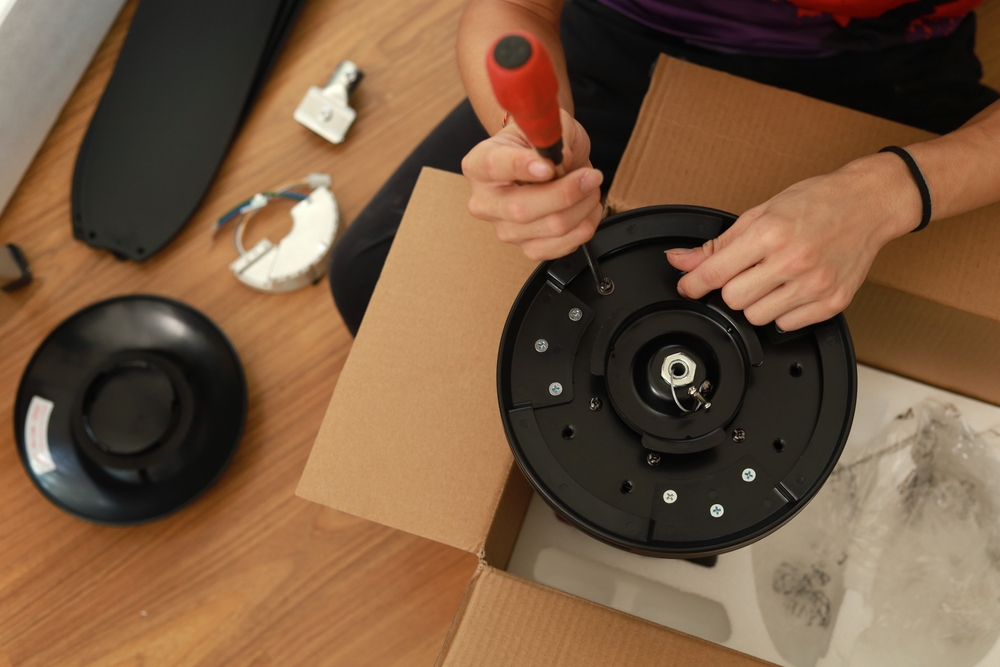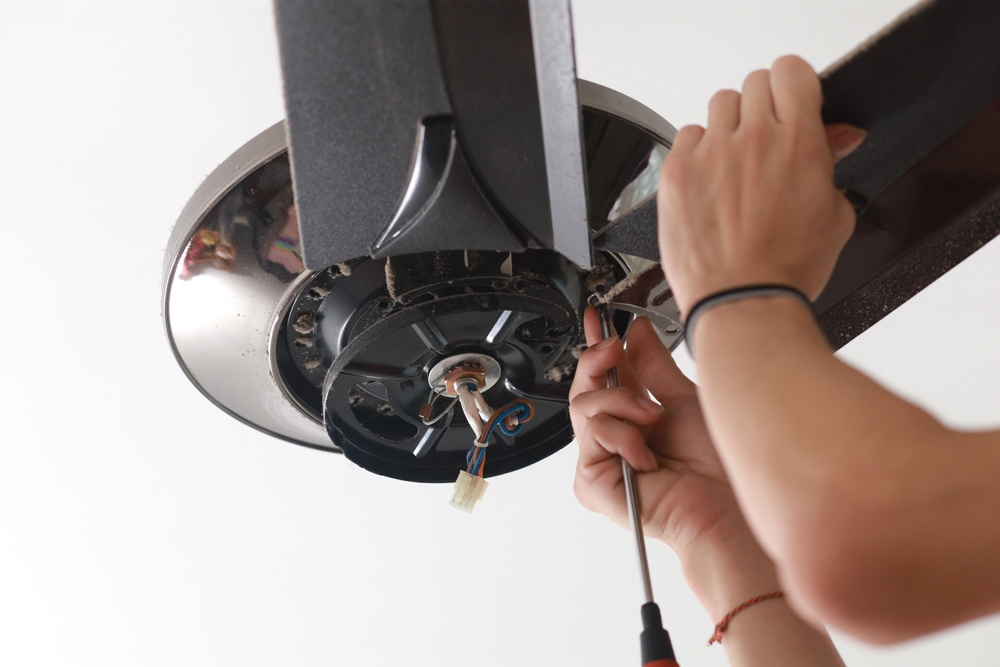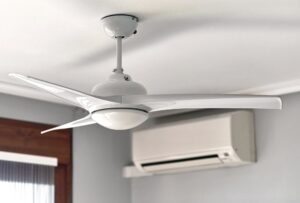Do you need an electrician to hang a ceiling fan?
No, you don’t necessarily need an electrician to get your ceiling fan installed. If you’re handy and have experience with electrical tasks like connecting wires and mounting fixtures, then installing a ceiling fan yourself might be feasible.
There are a ton of online resources and tutorials like this one that can guide you through the process.
However, if you have zero experience in any electrical work, ceiling fan installation might be more complex than you expect. Especially if your wiring is not already set up for a fan or your ceiling requires reinforcement.
If you’re not confident in your electrical DIY skills or unsure about your specific situation, hiring a licensed electrician is the safest and most reliable option. Local sparkies like us can ensure a professional, code-compliant installation that provides you with peace of mind throughout the process.
But if you do end up going for a DIY installation, below are the tools you will need to ensure smooth and safe installation process.
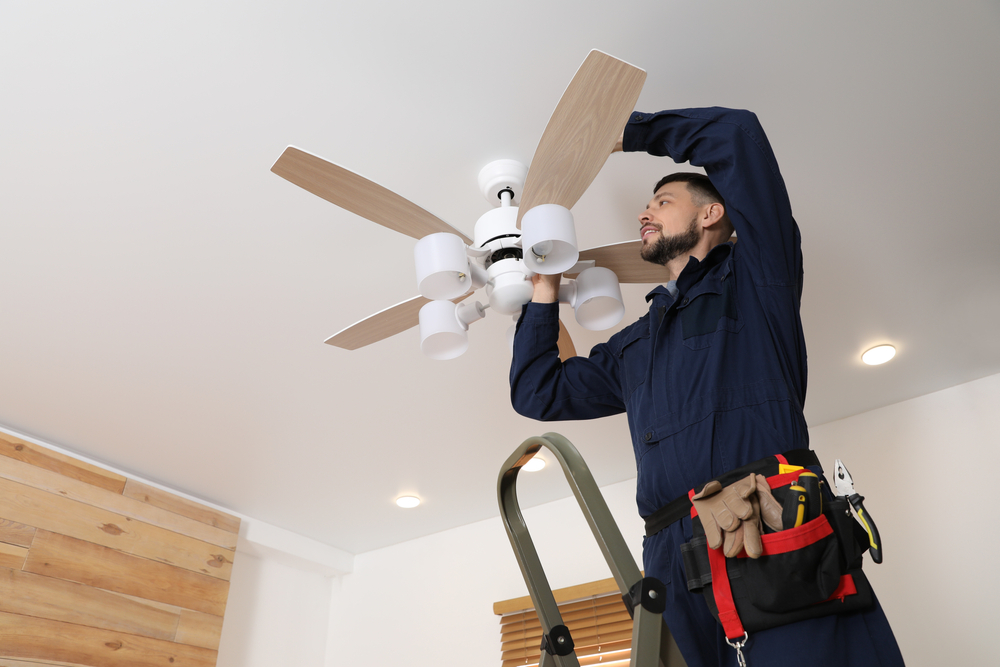
Tools needed for ceiling fan installations
Before starting to install a ceiling fan, make sure you have all the necessary tools and materials at hand. Some of the essential items include:
- A ceiling fan
- A ceiling fan light kit (optional)
- A downrod
- Mounting hardware
- Wire connectors
- An electric ceiling box (if needed)
- A ceiling fan mounting kit
- Electrical tape
- Wire nuts
Besides the materials, you will need the following safety equipment:
- 6-foot ladder
- Cordless drill with multiple screwdriver bits
- 4-inch hole saw
- 7/8 inch wrench
- Stud finder
- Non-contact voltage tester
- Wire cutters/strippers
- Adjustable wrench
- Pliers
- Dust mask
These tools will help guarantee a safe and trouble-free installation process.
Safety Precautions
Safety should always be a priority during the ceiling fan installation process. Especially if you’re doing it yourself. Make sure to follow these steps when installing a new fan:
- Turn off the power at the breaker or fuse box before beginning the installation.
- Use a voltage tester to ensure there’s no live current in the wires.
- Follow ladder safety guidelines when working at heights.
- Wear protective gloves and eye protection when handling the fan and its components.
If you don’t have any of the tools and safety equipment required in installing ceiling fans, you might be better off hiring a professional electrician to handle the installation of the fan, connection of the main electrical power supply and installing all necessary electrical components, including the wall switch and outlets.
But if you’re house is fully equipped with the required tools, you can proceed to your DIY electrical work.
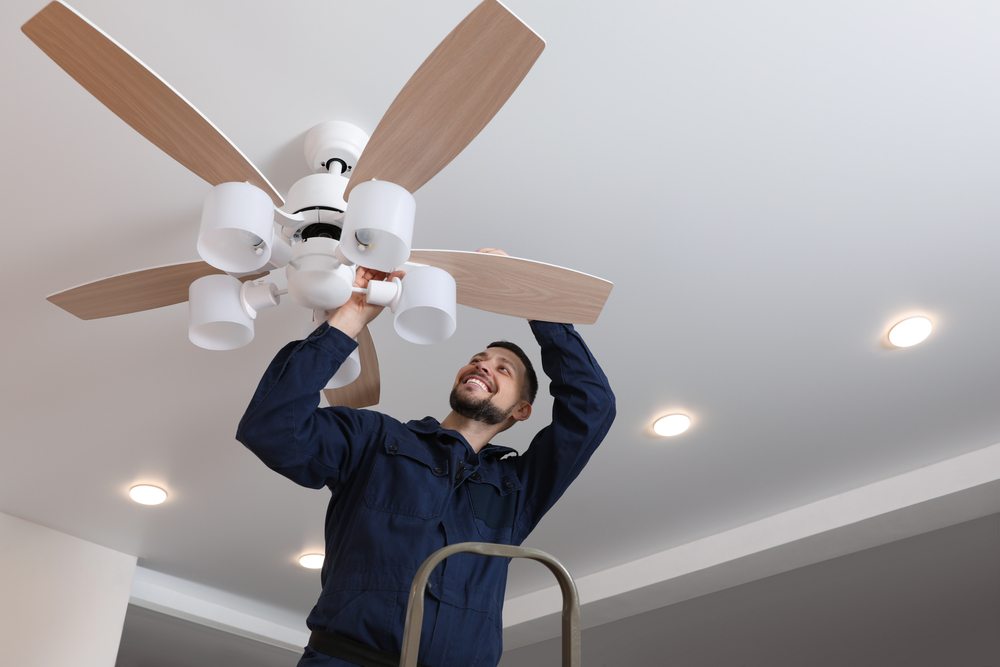
How do you replace or install a ceiling fan?
As certified and accredited electricians, ceiling fan installation is considered a major electrical upgrade or improvement to a home. So as much as possible, this should only be performed by an experienced and licensed electrician. This ensures that the ceiling fan has been installed correctly and safely.
However, if you’re pretty comfortable with your wiring and electrical skills, you may do a good job installing your ceiling fan. Below is a step-by-step breakdown of how to install a ceiling fan.
Following these directions is crucial to ensure a successful ceiling fan installation.
Step 1: Removing the old ceiling fan
Before installing your new ceiling fan, you’ll need to remove the old fixture or fan from the ceiling mount safely. You can skip this if you’re installing a brand-new fan. To do this, follow these steps:
- Turn off the power to the circuit at the breaker box.
- Unscrew the mounting screws and remove the fixture.
- Disconnect the wires from the existing light fixture.
Safely and cautiously removing the old fixture creates a clean and secure space for your new ceiling fans.
Step 2: Installing the mounting bracket and electrical box
The next step is to install the mounting bracket and electrical box to support your new ceiling fan. Here’s how:
- If there is an existing electrical box, make sure it can hold the weight of the new ceiling fan. If not, start by changing out the current electrical box.
- Securely install the new electrical box into the space and rotate it until it is firmly in place.
- Ensure that the new box is fan-rated and complies with Australian height and weight regulations.
Once the electrical box is securely in place, attach the mounting bracket to the fan and affix the bracket to the ceiling using the screws provided. This will ensure that your fan is anchored correctly and ready for wiring.
Step 3: Wiring the ceiling fan
Now it’s time to wire your ceiling fan according to the manufacturer’s instructions.
First, connect the ceiling fan wiring by attaching the fan’s wires to the wires from the electrical ceiling box:
- the black wire from the fan should be connected to the black wire from the electrical box
- the blue wire from the fan to the red wire from the ceiling (if present)
- the white wires from the fan and ceiling together
- the green or bare copper wires together
The connection between coloured wires may vary depending on the manufacturer’s manual so make sure to carefully read it as well.
Once the wires are connected, secure the fan to the mounting bracket. Be sure to double-check all electrical connections and wire connections to ensure they are correctly installed and connected.
Step 4: Attaching the fan blades and light kit (if applicable)
With the fan securely mounted and wired, the final step is to connect the ceiling fan blades and light kit if your unit has the lighting fixture. To do this, first, secure the blades to the fan using the screws and washers provided.
Next, if your fan has a light kit, follow these steps to mount it securely to the fan:
- Connect the light kit’s white wire to the fan’s white wire.
- Connect the non-white wire to the fan’s non-white wire.
- Tuck the wires into the fan housing.
- Attach the light kit or light bulbs to the fan using the provided screws, tightening them to ensure the light kit is secure.
Finally, install the light fixture, following the manufacturer’s instructions for your specific ceiling fan and light kit.
